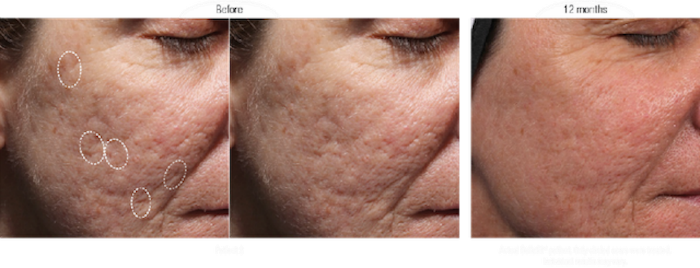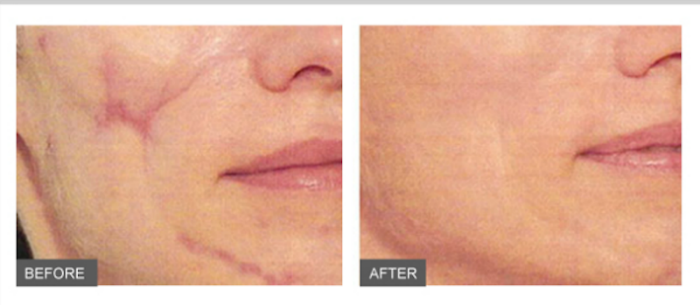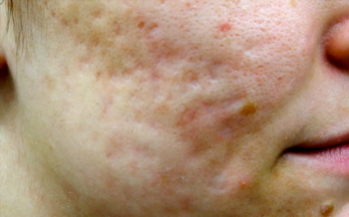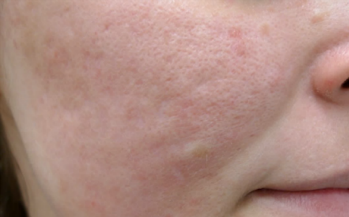Scars Treatment Center
A scar is a permanent patch of skin that grows over a wound. It forms when your body heals itself after a cut, scrape, burn or sore.

You can also get scars from surgery that cuts through the skin, from infections like chickenpox, or skin conditions like acne. Scars are often thicker, as well as pinker, redder or shinier, than the rest of your skin.
How your scar looks depends on
How big and deep your wound is
Where it is
How long it takes to heal
Your age
Your inherited tendency to scar
Scars usually fade over time but never go away completely. If the way a scar looks bothers you, various treatments might minimize it. These include surgical revision, dermabrasion, laser treatments, injections, chemical peels and creams. Dr. Rothfeld board certified dermatologist at NYC Dermatology can evaluate you for the proper treatment.
What Can and Cannot Be Done for Scars?
Several techniques can minimize a scar. Most of these are done routinely in the dermatologist's office. Only severe scars, such as burns over a large part of the body may require general anesthesia or a hospital stay.
Surgical scar revision can improve the way scars look by changing the size, depth, or color. However, no scar can ever be completely erased, and no technique will return the scar to its normal uninjured appearance. Surgical scar revision typically results in a less obvious mark. Because each scar is different, each will require a different approach.
The most important step in the treatment of scars is careful consultation between the patient and the dermatologist, finding out what bothers a patient most about a scar, and deciding upon the best treatment.
Scar Treatment
Surgical Scar Revision
Based on the ability of the skin to stretch with time, surgical scar revision is a method of removing a scar and rejoining the normal skin in a less obvious fashion. The surgical removal of scars is best suited for wide or long scars, those in prominent places, or scars that have healed in a particular pattern or shape. Wide scars can often be cut out and closed, resulting in a thinner scar, and long scars can be made shorter.
A technique of irregular or staggered incision lines, rather than straight-line incisions, forming a broken-line scar which is much more difficult to recognize, may be used. Sometimes, a scar's direction can be changed so that all or part of the scar that crosses a natural wrinkle or line falls into the wrinkle, making it less noticeable. This method can also be used to move scars into more favorable locations, such as into a hairline or a natural junction (for instance, where the nose meets the cheek). Best results are obtained when the scar is removed and wound edges are brought together without tension or movement (pull) on the skin.
Dermabrasion
Dermabrasion is a method of treating acne scars, pockmarks, some surgical scars, or minor irregularities of the skin's surface. An electrical machine is used by a dermatologist to remove the top layers of skin to give a more even contour to the surface of the skin. While it can offer improvement for certain scars, it cannot get rid of the scar entirely. Patients can usually return to work within a week. If defects are minor, only one dermabrasion will be needed. Several sessions may be required if defects are deep and extensive, as in deep acne scars.
Laser Resurfacing and Pulsed Dye Laser
Scar Revision
Another method of improving surgical, acne, chicken pox, and other scars is laser scar revision. High-energy light is used to remove or remodel unwanted, damaged skin. Patients can usually return to work or regular activity within one week, but skin may stay pink for several weeks or months, particularly after skin resurfacing with a carbon dioxide laser. Several different lasers are available depending on the skin defect requiring improvement. A pulsed dye laser, for example, uses yellow light to remove scar redness and to flatten raised scars (hypertrophic scars or keloids). This laser can also improve itching and burning sensations in the scar. Acne scars or other indented (atrophic) scars can be improved with laser skin resurfacing. Hypertrophic (thick, raised) scars or keloids typically need two or more pulsed dye laser treatments every two months.
Soft Tissue Fillers (juvederm, hyaluronic acid, or fat injections)
Various injectable substances are available to elevate indented soft scars. The amount of material injected will vary with the size and firmness of the scar. Juvederm may be used. Improvement is immediate but is not permanent and juvederm injections often need to be repeated. Hyaluronic acid injections typically last up to a year. The patient's own fat or injectable donated fascia can be used in full-thickened deep depressed scars. The dermatologist will discuss the available "fillers" and help you decide which is best for your scar. Research is continuing to develop more long-standing substances to inject into scars.
Punch Grafts and Punch Excisions
Punch grafts are small pieces of normal skin used to replace scarred skin. A tiny circular "cookie cutter" is used to cut a hole in the skin and remove the scar. The area is then filled in with a matching piece of unscarred skin, usually taken from the skin behind the ear. The "plugs" are taped into place for five to seven days as they heal. Punch excisions, on the other hand, involve the use of stitches to close the holes produced by the tiny skin punch. The stitches are removed in five to seven days. Even though the punch grafts and excisions form scars of their own, they provide a smoother skin surface which is less visible than depressed scars. Deep or "pitted" acne scars are best treated by punch grafts or excisions.
Chemical Peels
This procedure involves the use of a chemical to remove the top layer of the skin in order to smooth depressed scars and give the skin a more even color. It is most helpful for shallow superficial scars.
The chemical is applied to the skin with an ordinary cotton-tipped applicator or gauze beginning on the forehead and moving over the cheeks to the chin. Different chemicals can be used for different depth peels. Light peels require no healing time while deeper peels can require up to two weeks to heal. The amount of scarring and color change determines the type of peel selected.
Other Scar Treatment Methods
Pressure bandages and massages
can flatten some scars if used on a regular basis for several months.
Silicone-containing gels, creams, and bandages
have also been helpful in reducing scar thickness and pain. They must also be used regularly and results are variable. Silicone impregnated gels can be used by the patient at home to remodel elevated scars in addition to injections of scar tissue.
Cryosurgery
involves freezing of the upper skin layers which causes blistering of the skin to remove the excess tissue at the scar.
Cortisone (steroid) injections or tape
are effective in softening very firm scars (or keloids) causing them to shrink and flatten. This treatment is popular (along with pulsed dye laser) for hypertrophic scars and keloids.
Start Here
What Is a Scar
Overviews
Scars
Treatment
Dermabrasion
Fading from Sight: New Advances to Minimize Surgical Scars
Laser and Intense Pulsed Light Applications
Scar CorrectionScar Revision: If You're Considering Scar Revision...
Specific Conditions
Acne Scarring
ACNE SCAR TREATMENTS
Thermage ®
The same treatment that clears acne also improves acne scarring. The Thermage ® procedure targets water in the skin heating the skin and stimulating the production of new collagen. In clinical studies comparing the new non-ablative treatments for improving scars Thermage ® is showing the most significant clinical improvement.
Fraxel™
The latest in resurfacing is the concept of fractional resurfacing with the Fraxel™ laser. This novel fractional approach to laser skin treatment represents a new science and category of cosmetic skin treatments that offers patients the positive results of CO 2 and Er:YAG laser with the lunchtime elegance of a no-downtime procedure.
Reliant Technologies Announces FDA Clearance of the Fraxel(R) Laser for the Treatment of Acne and Surgical Scars; Physicians Report Fractional Laser Resurfacing Achieves Dramatic Improvement
Sciton Laser Resurfacing
The most advanced Erbium:YAG (Er:YAG) laser available today for laser resurfacing. This new advance in laser resurfacing technology allows us to dramatically improve your skin with fewer risks and lessdown time than the older CO2 laser resurfacing technology.
TCA CROSS
If you have just a few deep scars we can treat them focally with the TCA CROSS method.
During such treatment, a high concentration of Trichlorocetic acid is introduced just inside the scar. The resurfacing response that occurs inside the depression stimulates collagen production that, over multiple sessions, causes the scar to rise up and close in on itself.
New York Dermatology by Board Certified Dermatologist Dr. Gary Rothfeld is a board certified NYC Dermatologist with a New York City office in Manhattan, New York providing expert skin care, dermatology, and cosmetic dermatology services. A Park Avenue practice with an international reputation in general, cosmetic, and surgical dermatology.
I personally see every new patient who visits our office. I am not just a physician, I am a Board Certified Dermatologist. My goal is, quite simply, to provide the type of dermatology care which I would seek for my own family. This is a very important point, since physicians often use the phrase "Doctor's Doctor" to refer to those individuals who typically are selected by physicians themselves for personal care. I am confident that my practice fully meets that definition. This is the type of 5-star care and service that our patients expect, deserve and receive. I treat every patient the way I would want to be treated: with courtesy, dignity and respect. I carefully listen to their hair and skin-care concerns and offer a variety of options including a treatment plan that I believe will give them the best results
Dr Gary sees every patient himself and believes in personalized care. The Doctor does not employ any physician assistants, nurse practitioners, or other physician substitutes to do his treatment. He sees every patient himself at every visit.
A significant percentage of my Hair Loss,Dermatology and Cosmetic Dermatology Conditions are diagnosed on listening to the medical history of the patient alone, a further percentage on examination and the remainder on further detailed or careful examination and my patients teach me the rest. It is clear to me that history and examination skills remain at the very core of my dermatology practice. Older Dermatologists like myself rely on history and physical to a greater degree than the younger dermatologists. I think that the pendulum has swung too far towards all these cosmetic procedures where the younger dermatologists are just doing cosmetic procedures and not listening to their patients. This is an important point because if the Dermatologist does not spend enough time with the patient during the consult the cosmetic procedures will probably not work.
Any questions or to make an appointment click here 
Dr. Rothfeld, recognized by the by the entertainment industry of America as one of the best dermatologists in Manhattan, has organized a comprehensive skin care center offering personalized state of the art services including medical,pediatric, and cosmetic dermatology.
New York Dermatology serves the following neighborhoods within New York (NY), which are in close proximity to our office:
Upper East Side Dermatology, Fifth Avenue Dermatology, Park Avenue Dermatology, Madison Avenue Dermatology, Upper West Side Dermatology, Midtown Dermatology, Lower East Side Dermatology,Chelsea Dermatology, Gramercy Park Dermatology, Murray Hill Dermatology, Greenwich Village Dermatology, East Village Dermatology, West Village Dermatology, Soho Dermatology, Tribeca Dermatology, Meat Packing District Dermatology, Sutton Place Dermatology, Wall Street Dermatology, Hells Kitchen Dermatology, and the burroughs of Brooklyn Dermatology , Bronx Dermatology, Queens Dermatology and Staten Island Dermatology.
Dr. Gary Rothfeld is recognized as one of the best Dermatologist in New York, NY, Manhattan, NYC, New York City and the nation by the entertainment industry in the United States of America. At New York Dermatology headed by board certified Dermatologist Dr. Rothfeld, sees patients 7 days a week including Saturday and Sunday.
We accept all credit cards as well as debit cards for payment of services.
Open 7 Days A Week — Se Habla Español



